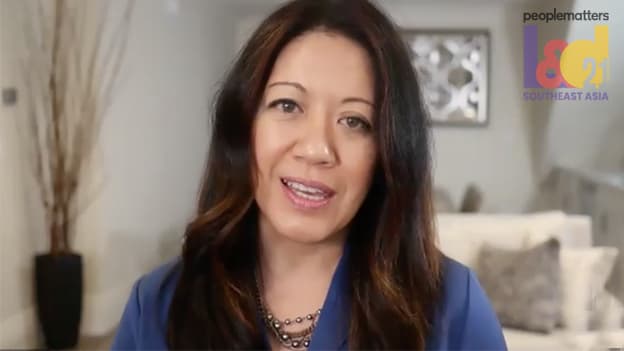Disruption is an opportunity for change: Charlene Li

Disruption is frequently thought of as an unfortunate external event, either to be avoided or to be used as a driver of growth. But that is a backwards way of viewing it, according to analyst and innovator Charlene Li. “It's actually growth that creates disruption,” she says. “When we come up with an idea for growth, we develop it and start putting in plans, and then we realize it's going to be really hard and we're going to have to change so many things about the way we do business...and maybe we don't want to go there.”
And yet growth can only happen if organizations can push past the discomfort of change. So what does it take for an organization to be able to continuously change and disrupt itself? Delivering the keynote address at People Matters L&D SEA Conference on March 4, Li listed out several characteristics of successfully disruptive organizations that she has identified in the course of her research.
Focus on the future
“Disruptive organizations do one thing and one thing really well. And that is to focus on the future customer,” Li says. “They know that they have to make those hard decisions today, those sacrifices, those changes, in order to meet that future.” As an example, she cited Adobe's decision to move to the cloud subscription model back in 2013, a change which lost the company enormous amounts of money at first but then more than doubled its revenue a few years later. “This is the key problem I think many organizations have—how are we to make these sacrifices in order to make the future happen?”
The solution, she says, is leadership: being able to understand how comfortable the organization is with change versus the status quo, how comfortable the team—the people in the organization—are with change and disruption, and then gradually aligning the team and organization's capabilities with their ambitions.
“This is more than just having a purpose statement. You have to believe that this future customer is worth striving for...that is the only way you can overcome the gravity, the pull of your existing customers, who want you to stay just where you are.”
The elements of a disruptive culture
Making an organization comfortable with disruption and capable of using it can involve changing its culture, Li says—and that is never an easy task. She suggests breaking it down into the two main components of culture: the beliefs that the organization collectively holds true, and the behaviors resulting from those beliefs.
Disruptive organizations have three specific beliefs.
1. Openness: the idea that the default in the organization is to share information to explain how decisions are made, versus the default today that things are kept quiet and on a need-to-know basis.
“This belief says that we are going to be very open about what works and when things are not working,” Li explains. It leads to greater confidence and trust, and to accountability. More importantly, she adds, openness means that if there is a problem, the organization can dedicate resources to solving it, rather than sweeping it under the carpet.
2. Agency: the belief that we have the ability to do something, because we have all the needed information about the strategy, we know what needs to be done, and we are able to do it without having to seek permission.
Li draws a clear distinction between agency and the more frequently used idea of empowerment.
“Empowerment says, somebody is going to tell me that I have power and the permission to do it,” she points out. “With agency, everybody already knows what their job is and they feel fully empowered to execute it.”
3. A bias for action: the idea that a strategy, or an action, or an outcome, does not need to be perfect, and that it is more important to take the first step.
In fact, Li says, trying to make things perfect before launching a plan is linked to our fear of failure, and that belief doesn't work. “Make a decision,” she urges. “And then we'll see if it works or not. If it works, great, we'll take the next step. If it doesn't, we'll come back and make another decision.”
Structure and governance
“One of the most counterintuitive things that I found in my research is that when you have a disruptive organization, they're actually incredibly well organized,” Li says. “Everybody knows exactly how they can put up a new idea, how they're going to disagree, how they're going to challenge each other, who gets to make decisions.”
That clarity, she believes, is central to being able to raise problems, suggest new ideas, or make decisions, simply because people know when they can do any of those things and how to do it—they don't waste time and energy trying to navigate the processes and policies, and can instead concentrate on disruptive growth.
Most importantly, disruptive organizations define the boundaries of what is allowable, essentially giving people both a goal for leaving their comfort zone and a firm endpoint—an edge—where they can stop disrupting. It is on that edge, Li says, that change and growth happens.
“Disruption is an opportunity for change,” she says. “You don't grow unless you are pushing yourself out of your comfort zone. And it's only on that edge where leaders and organizations can experience growth.”
















